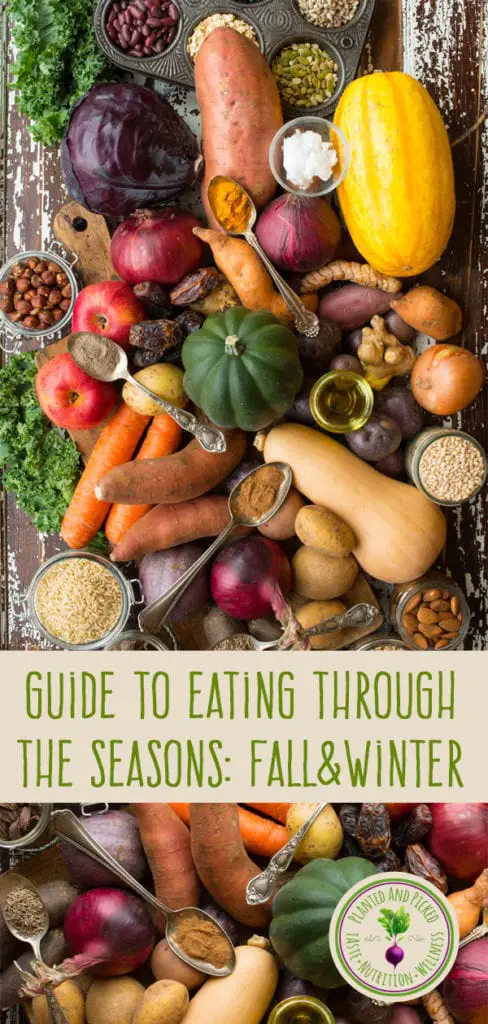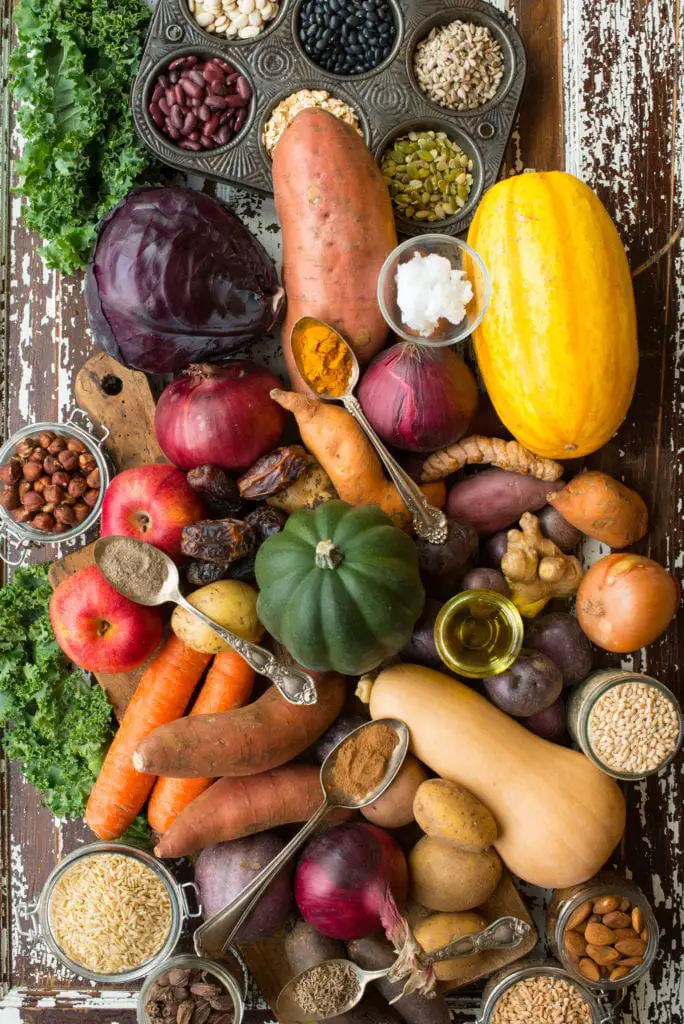

Eating through the seasons, or seasonal eating is deeply rooted in our history, but in modern times, when we can get food from anywhere around the world at any time, we have lost sight of this important tradition.
Balancing the nature of your local climate, lifestyle choices and diet, can aid in keeping you healthier and more energetic during all phases of the year. We know intuitively that we like to eat more cooling fruits in the summer and warming soups in the winter, but there is so much more that we can do if we pay closer attention to our natural environments.
In Ayurveda, the traditional Hindu system of medicine, the term Rtucharya means seasonal regimen. Autumn is the Vata season and Vata is one of the three Ayuvedic Dosha’s and is comprised of qualities such as cold, light, dry and windy. To combat these qualities, you could include foods in your diet that are warming, grounding, heavy, oily and dense.
Fall and winter are seasons of deficiency and change and it is the time to focus on nourishing your body. Nourishing foods, especially soups and stews, seem all the more enticing. In Ayurveda, ojas building foods are nourishing foods. Ojas is the essence of our life energy. Ojas building foods for autumn include root vegetables such as carrots and beets, squash like pumpkins and butternut, nuts and seeds and warming spices.
It is easy to get out of balance as the weather turns colder. In addition to nourishing foods, there are also lifestyle guidelines that you can follow. These can include: following a consistent schedule for meals and sleep; consuming warm foods and drinks; using warmed sesame oil on your skin; slowing down; and keeping yourself warm.
We live in Canada and have four distinct seasons. The summary below describes some of the seasonal foods that are local to our environment. Please do the research on what is local and in season for you, so that you can practice eating through the seasons.
Fruit (sweet and heavy): apples, cranberries, dates, figs, plums, pears, bananas and raisins
Vegetables: Sweet potato, squashes, carrots, parsnips, turnips, onions and cold weather greens such as kale and swiss chard
Grains: Brown rice, oats, quinoa, buckwheat and millet
Beans: Black beans, kidney beans, navy beans, lentils, adzuki and sprouted tofu
All Nuts and Seeds (Raw and soaked)
Cold Pressed oils: such as coconut, sesame and avocado
Warming Spices: Ginger, cardamom, cloves, cinnamon, cumin and fennel
Below is an example of a good drink to include in your Fall regimen. I enjoy this drink either in the morning on a cold day or at night to help wind down. Another recipe on our blog that includes many of these seasonal ingredients is our Oatmeal Cranberry Muffins.
Spiced Almond Milk
Warm 1 cup of homemade almond milk (or other plant based milk) on the stove and turn off the burner. Add 1 tsp of maple syrup, 1/4 tsp each of cinnamon, ground ginger and cardamom and 1/2 tsp vanilla extract. Use a whisk or place in a blender to mix. A battery-operating hand whisk also works well for this.
Please feel free to leave any comments below. We love to hear back from our readers. You may also be interested in the Health Benefits of Beans.




Leave a Reply